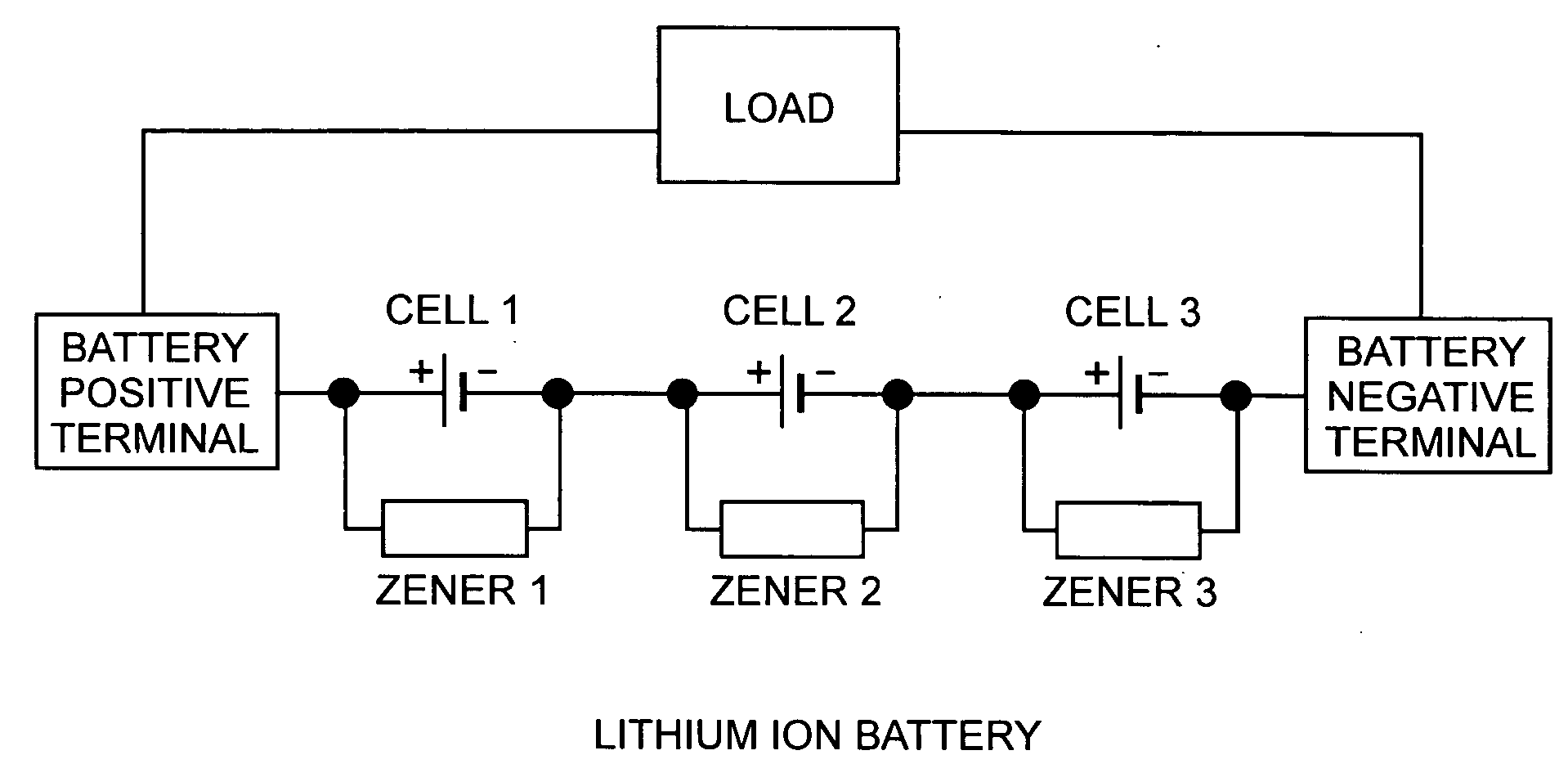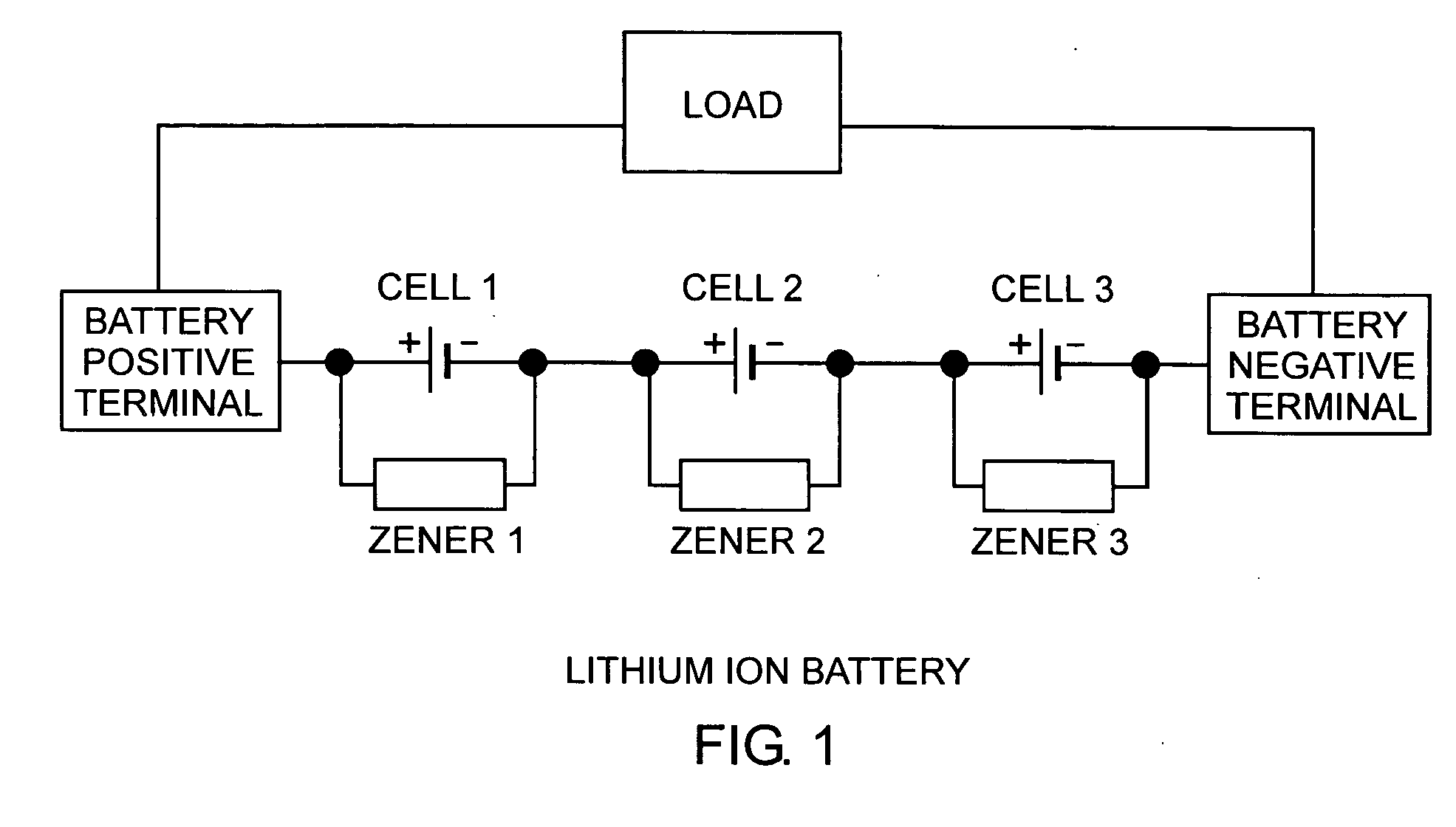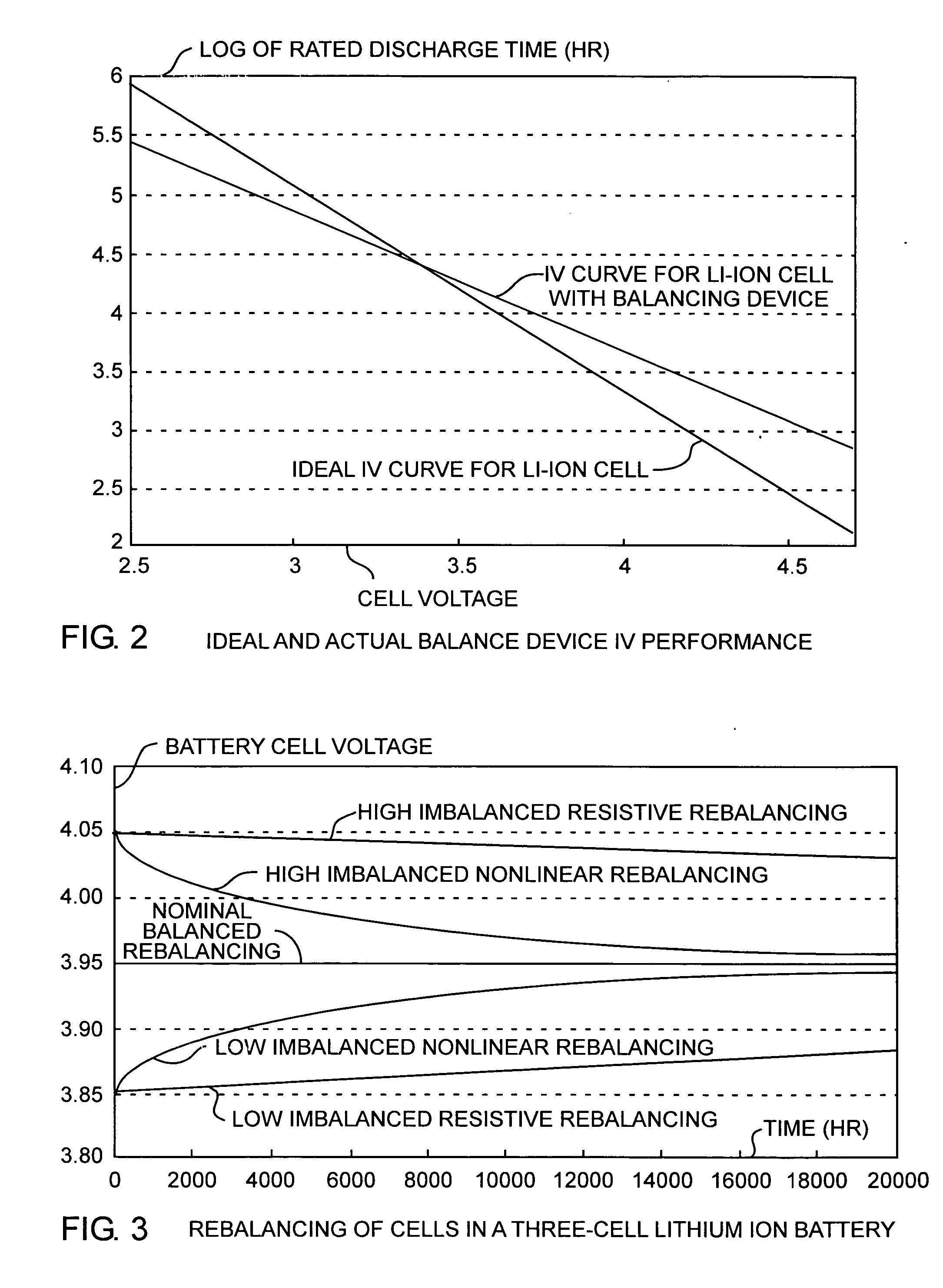Balanced lithium ion battery
a lithium ion battery and lithium ion battery technology, applied in the field of electric battery systems, can solve the problems of lithium ion battery cells not showing monotonically increasing losses, lithium ion battery cells cannot generally tolerate overcharge without being degraded, and disadvantageous changes in the charge state of each cell
- Summary
- Abstract
- Description
- Claims
- Application Information
AI Technical Summary
Benefits of technology
Problems solved by technology
Method used
Image
Examples
Embodiment Construction
[0013] An embodiment of the invention is described with reference to the figures using reference designations as shown in the figures. Referring to FIG. 1, a schematic diagram shows balancing devices, such as zener diode 1, zener diode 2, and zener diode 3, placed in parallel with each respective battery cell, cell 1, cell 2, and cell 3, in a multicell battery. In the general form, the balancing devices are nonlinear passive electrical devices having a positive and a negative terminal. The positive terminal is connected to the positive terminal of the cell, and the negative terminal to the negative cell terminal. The cells are preferably lithium ion battery cells. The exemplar battery is shown having three cells connected in series in a serial string, but the string could be any number or a plurality of like cells and like balancing devices. It should also be apparent that multiple serial strings, each of any number of a plurality of serial cells and respective balancing devices cou...
PUM
 Login to View More
Login to View More Abstract
Description
Claims
Application Information
 Login to View More
Login to View More - R&D
- Intellectual Property
- Life Sciences
- Materials
- Tech Scout
- Unparalleled Data Quality
- Higher Quality Content
- 60% Fewer Hallucinations
Browse by: Latest US Patents, China's latest patents, Technical Efficacy Thesaurus, Application Domain, Technology Topic, Popular Technical Reports.
© 2025 PatSnap. All rights reserved.Legal|Privacy policy|Modern Slavery Act Transparency Statement|Sitemap|About US| Contact US: help@patsnap.com



